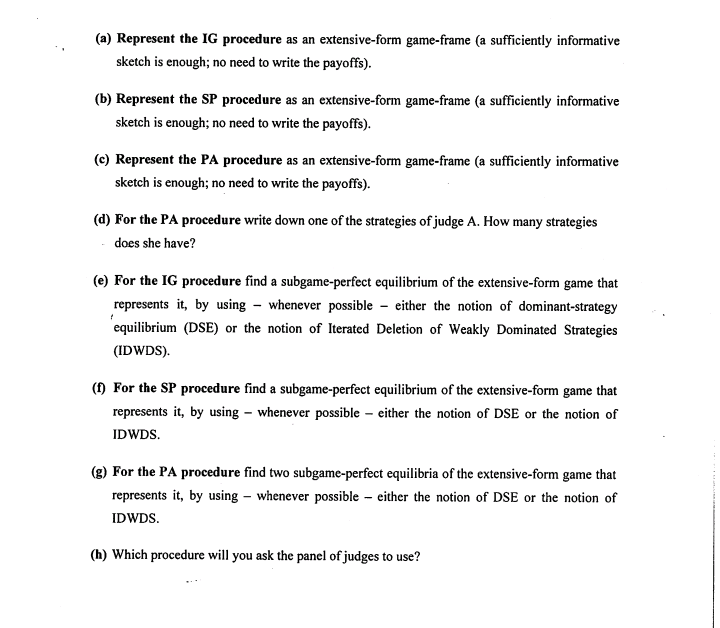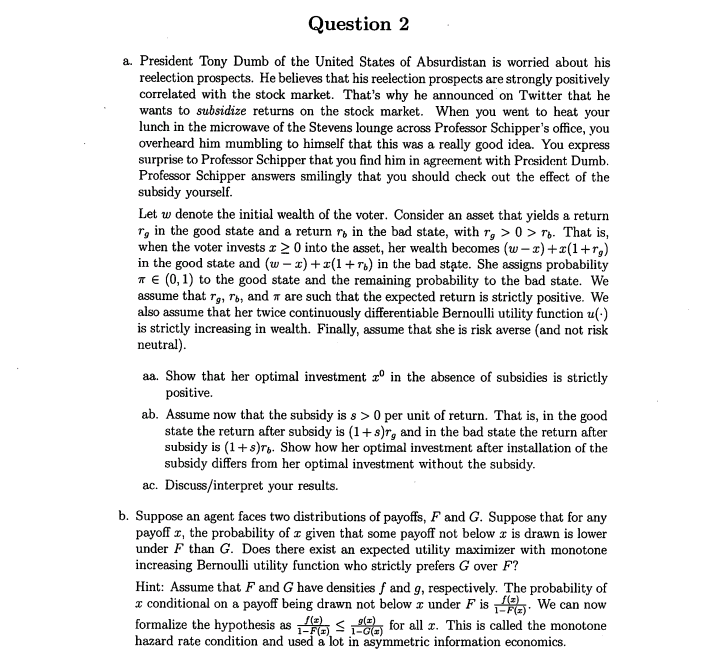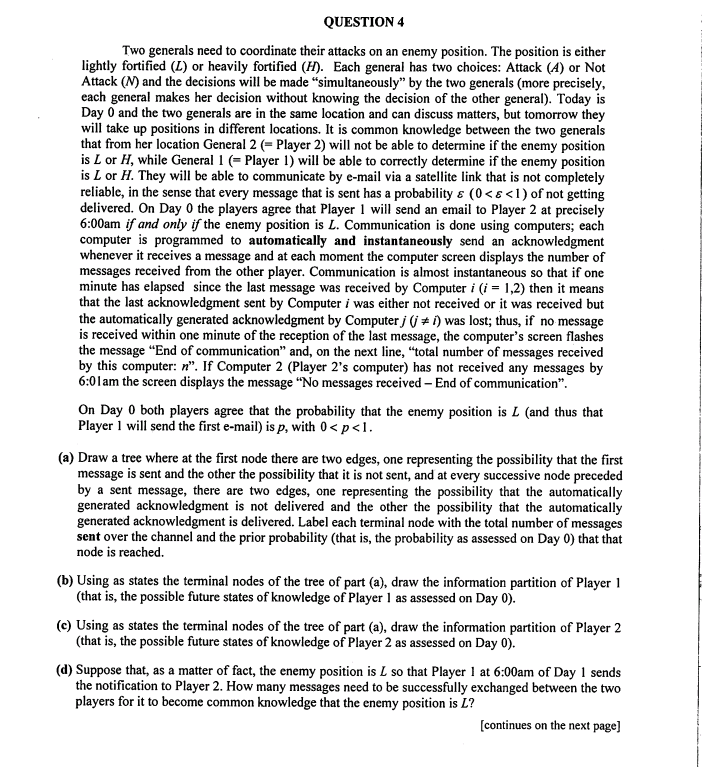


Qq123...answer please
(a) Represent the IG procedure as an extensive-form game-frame (a sufficiently informative sketch is enough; no need to write the payoffs). (b) Represent the SP procedure as an extensive-form game-frame (a sufficiently informative sketch is enough; no need to write the payoffs). (c) Represent the PA procedure as an extensive-form game-frame (a sufficiently informative sketch is enough; no need to write the payoffs). (d) For the PA procedure write down one of the strategies of judge A. How many strategies does she have? (e) For the IG procedure find a subgame-perfect equilibrium of the extensive-form game that represents it, by using - whenever possible - either the notion of dominant-strategy equilibrium (DSE) or the notion of Iterated Deletion of Weakly Dominated Strategies (IDWDS). (f) For the SP procedure find a subgame-perfect equilibrium of the extensive-form game that represents it, by using - whenever possible - either the notion of DSE or the notion of IDWDS. (g) For the PA procedure find two subgame-perfect equilibria of the extensive-form game that represents it, by using - whenever possible - either the notion of DSE or the notion of IDWDS. (h) Which procedure will you ask the panel of judges to use?Question 2 a. President Tony Dumb of the United States of Absurdistan is worried about his reelection prospects. He believes that his reelection prospects are strongly positively correlated with the stock market. That's why he announced on Twitter that he wants to subsidize returns on the stock market. When you went to heat your lunch in the microwave of the Stevens lounge across Professor Schipper's office, you overheard him mumbling to himself that this was a really good idea. You express surprise to Professor Schipper that you find him in agreement with President Dumb. Professor Schipper answers smilingly that you should check out the effect of the subsidy yourself. Let w denote the initial wealth of the voter. Consider an asset that yields a return r, in the good state and a return ", in the bad state, with r, > 0 > r;. That is, when the voter invests r 2 0 into the asset, her wealth becomes (w -) +x(1 +r,) in the good state and (w - x) + (1 + 7.) in the bad state. She assigns probability WE (0, 1) to the good state and the remaining probability to the bad state. We assume that ro, ";, and * are such that the expected return is strictly positive. We also assume that her twice continuously differentiable Bernoulli utility function u(.) is strictly increasing in wealth. Finally, assume that she is risk averse (and not risk neutral). aa. Show that her optimal investment :" in the absence of subsidies is strictly positive. ab. Assume now that the subsidy is s > 0 per unit of return. That is, in the good state the return after subsidy is (1 + s)r, and in the bad state the return after subsidy is (1 + $)75. Show how her optimal investment after installation of the subsidy differs from her optimal investment without the subsidy. ac. Discuss/interpret your results. b. Suppose an agent faces two distributions of payoffs, F and G. Suppose that for any payoff r, the probability of z given that some payoff not below a is drawn is lower under F than G. Does there exist an expected utility maximizer with monotone increasing Bernoulli utility function who strictly prefers G over F? Hint: Assume that F and G have densities f and g, respectively. The probability of I conditional on a payoff being drawn not below > under F is F(2J. We can now formalize the hypothesis as 1-6() 5 1 676 for all c. This is called the monotone hazard rate condition and used a lot in asymmetric information economics.QUESTION 4 Two generals need to coordinate their attacks on an enemy position. The position is either lightly fortified ([) or heavily fortified (F). Each general has two choices: Attack (A) or Not Attack (N) and the decisions will be made "simultaneously" by the two generals (more precisely, each general makes her decision without knowing the decision of the other general). Today is Day 0 and the two generals are in the same location and can discuss matters, but tomorrow they will take up positions in different locations. It is common knowledge between the two generals that from her location General 2 (= Player 2) will not be able to determine if the enemy position is L or H, while General 1 (= Player 1) will be able to correctly determine if the enemy position is L or H. They will be able to communicate by e-mail via a satellite link that is not completely reliable, in the sense that every message that is sent has a probability & (0












